Our Confidence in the Bible
There are many reasons we can be confident that the Bible we have is something we can rely on as the word of God. They call into question claims of critics that the Bible is merely a collection of myths, fables and other fiction. Extra biblical records, like those from Assyria, consistently confirm the biblical accounts. The below items, provides confidence that the places and people mentioned in the Bible are accurate, even though those places and people existed thousands of years in the past.
The Bible is Unique
- There is no other book in the world like it.
- Despite attempts over the centuries to ban or burn the bible, it not only survives but continues to thrive. In 2020, it had been translated into 704 languages
- No other book is so clear in its claims. Over 2000 times, it declares itself to be ‘the word of God’. “Knowing this first of all, that no prophecy of Scripture comes from someone’s own interpretation. For no prophecy was ever produced by the will of man, but men spoke from God as they were carried along by the Holy Spirit.” (2 Peter 1:19-20)
- The Bible was written over a period of 1600 years. Quite extraordinary.
- The Bible has 40 different writers.
- The writers had 20 different occupations. Some were Shepherds, some were Kings. Some were Leaders, fisherman, Doctors and Priest
- Finally, the Bible has never been successfully contradicted, adding to its uniqueness and ability to stand apart from every other book written.
- The Bible was written in 3 different languages. Hebrew, Chaldean and Greek.
- The Bible is the most printed book in history and the world’s best seller.
- Each year, approximately 100 million bibles or sections of the Bible are printed
Prophecy
The bible has prophesied many things which have already been fulfilled, this gives us confidence that the remaining will also be fulfilled.
- ISRAEL– to be scattered, preserved and regathered (Jer 30:10-11; 31:10-11; Deut 28:64). This has been fulfilled through Israel’s History BC 333 – 1948 (Israel as Nation)
- NINEVAH – To be destroyed and become an empty waste (Nah 2:10)
- BABYLON – to be a heap and a ruin (Jer 51:37; Isa 13-14)
- EGYPT – to become a base Nation and a power no more (Eze 29:15; 30:13)
- TYRE – to become a place for the spreading of nets (Eze 26:4,5, 12 & 14). This was fulfilled by Nebuchadnezzar in ~BC 604 & 580 and again by Alexander the Great in BC 332
- JERUSALEM – to be under Gentile power until retaken by the Jews (Luke 21:24). This has been fulfilled AD 70 – 1967
- WORLD POWERS – the chronology of world powers until subdued by Jesus Christ (Dan 2)
Archaeology
Many references in the Bible can be verified by archaeological evidence, evidence which in many cases has only been discovered in the last 100 years.
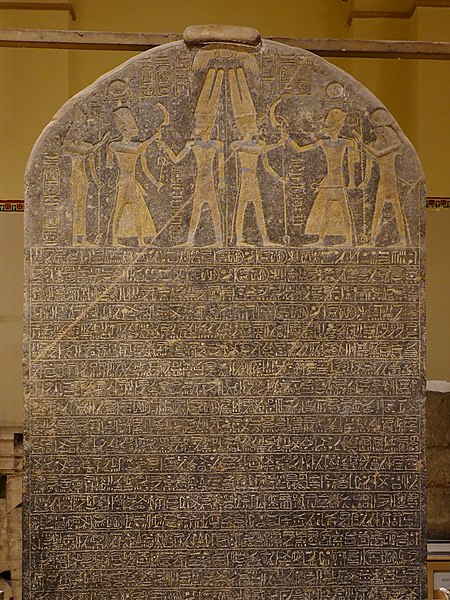 | Merneptah Stele (1213 to 1203 BCE) |
| Summary: An Egyptian monument mentioning a campaign into Canaan, including the mention of Israel as a people, providing early evidence of the Israelites’ presence in the region. | |
| Discovered: Discovered by Flinders Petrie at Thebes in 1896 | |
| Size: 318 cm high x 163 cm wide | |
| Current Location: Egyptian Museum in Cairo | |
| Bible Reference: Exodus 15:14-15; Judges 1:27-28. | |
| Further references: Expedition Bible Biblical Historical Context, |
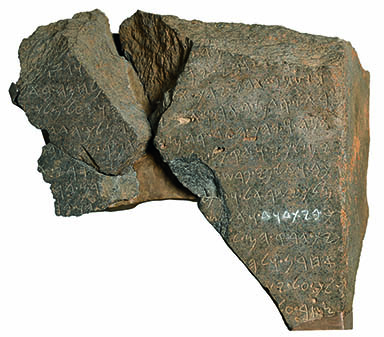 | Tel Dan Stele (9th century BCE): |
| Summary: An ancient Aramaic inscription discovered at Tel Dan in northern Israel, mentioning the “House of David” and providing evidence for the historical existence of King David. | |
| Discovered: On July 21, 1993 an archaeologist (Dr. Avraham Biran, & Surveryor Gila Cook) working at the Old Testament site of the city of Dan (today Tel Dan) found a piece of an inscribed stone referring to David. Other fagments were found in June 1994. | |
| Size: measures about 32 cm. high and 22 cm. at its greatest width. | |
| Current Location: Housed in the Louvre Museum, Paris | |
| Bible Reference: 2 Samuel 8:8 and 1 Kings 14:19-20. | |
| Further references: Biblical Historical Context Beyond Apologetics – Part 1 Beyond Apologetics – Part 2 House of David – Episode 1 |
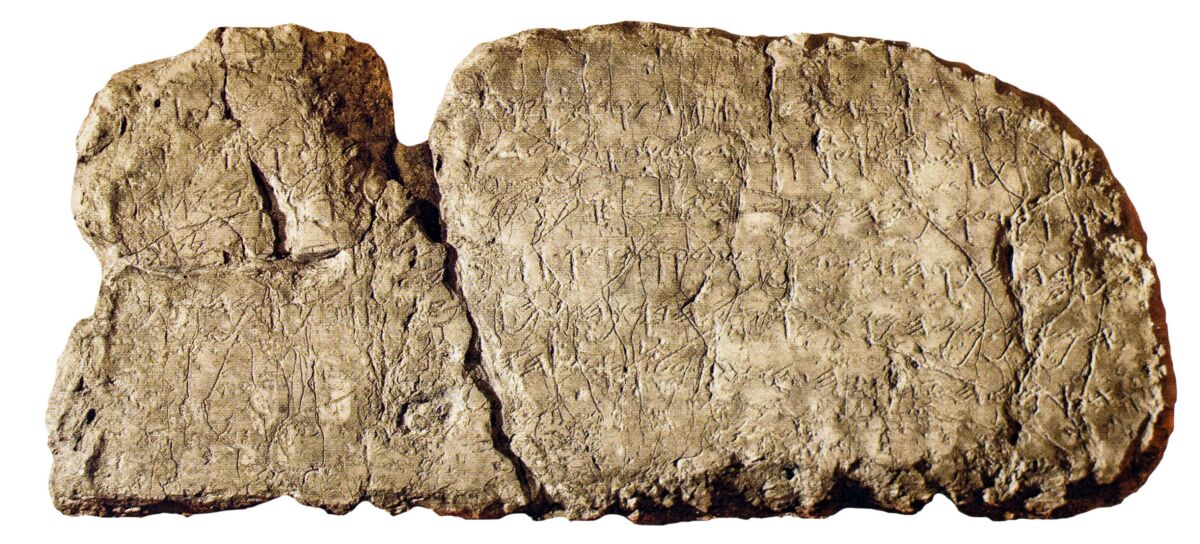 | Hezekiah’s Tunnel Inscription / Siloam Inscription (8th century BCE) |
| Summary: An ancient inscription within Hezekiah’s Tunnel in Jerusalem, describing the construction of the tunnel during the reign of King Hezekiah, as mentioned in 2 Kings 20:20 and 2 Chronicles 32:30. | |
| Discovered: 1880 | |
| Size: 50 cm high and 66 cm wide | |
| Current Location: Istanbul Archaeological Museum | |
| Bible Reference: 2 Chronicles 32:30. | |
| Further references: City of David |
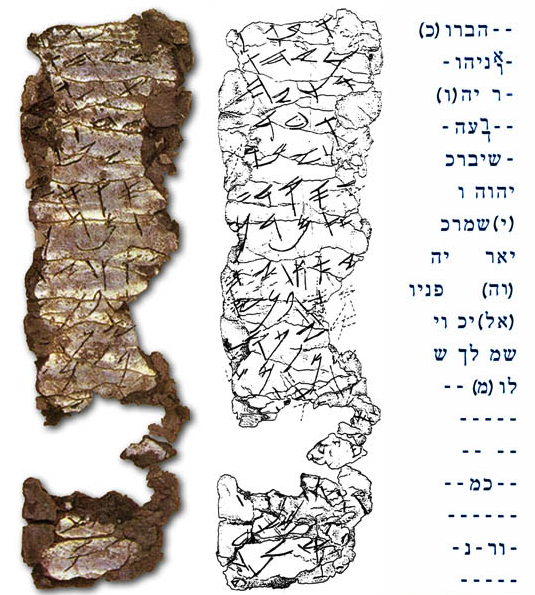 | The Silver Scrolls / Ketef Hinnom Scrolls (700 – 600 BCE) |
| Summary: Two Silver scrolls, dating back some 2,400+ years – towards the end of First Temple period Jerusalem, contain the text of the Priestly Blessing that was recited by priests at the Temple in Jerusalem, represent the oldest surviving Biblical texts ever discovered – centuries older than the Dead Sea Scrolls. “May the LORD bless you and guard you. May the LORD make His face shed light upon you and be gracious unto you. May the LORD lift up His face unto you and give you peace.” (Numbers 6:24 – 27) | |
| Discovered: in 1979 in Ketef Hinnom, just south of the City of David – the place where Jerusalem began – the Silver Scrolls were discovered in an excavation of ancient burial caves led by archeologist Prof. Gabriel Barkay. | |
| Size: KH1 measures 27x97mm, KH2 measures 11x39mm | |
| Current Location: Israel Museum | |
| Bible Reference: Numbers 6:24 – 27 | |
| Further references: Please refer to Joel Kramer’s video. Oracles of God Series City of David – Episode 24 |
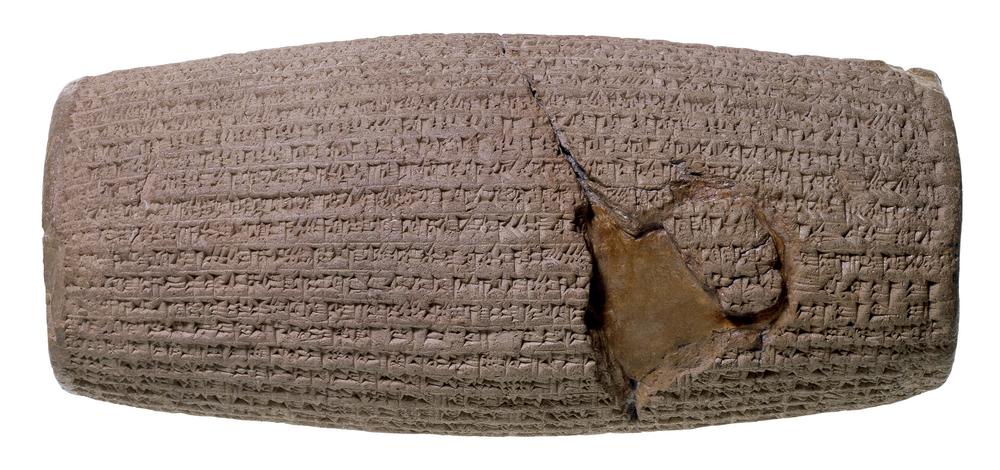 | Cyrus Cylinder (6th century BCE) |
| Summary: This clay cylinder is inscribed in Babylonian cuneiform with an account by Cyrus, king of Persia (559-530 BC) of his conquest of Babylon in 539 BC and capture of Nabonidus, the last Babylonian king. Cyrus claims to have achieved this with the aid of Marduk, the god of Babylon. He then describes measures of relief he brought to the inhabitants of the city, and tells how he returned a number of images of gods, which Nabonidus had collected in Babylon, to their proper temples throughout Mesopotamia and western Iran. At the same time he arranged for the restoration of these temples, and organized the return to their homelands of a number of people who had been held in Babylonia by the Babylonian kings. Although the Jews are not mentioned in this document, their return to Palestine following their deportation by Nebuchadnezzar II, was part of this policy. This cylinder has sometimes been described as the ‘first charter of human rights’, but it in fact reflects a long tradition in Mesopotamia where, from as early as the third millennium BC, kings began their reigns with declarations of reforms. | |
| Discovered: Babylon, southern Iraq. 90km south of Baghdad | |
| Size: 22.86 cm | |
| Current Location: British Museum Room 52, Ancient Iran, case 6, no. 7 | |
| Bible Reference: 2 Chron 36:23; Ezra 1; Is 44:28 | |
| Further references: City of David |
 | Dead Sea Scrolls (3rd century BCE – 1st century CE) |
| Summary: A collection of Jewish texts, including biblical and non-biblical writings, found in the Qumran caves, providing valuable insights into the religious and historical context of the time. | |
| Discovered: discovered between 1947 and 1956 in eleven caves near Khirbet Qumran, on the northwestern shores of the Dead Sea | |
| Size: approximately 950 different manuscripts of various lengths | |
| Current Location: The Israel Museum, Jerusalem | |
| Bible Reference: Provides numerous early copies of Old Testament texts, confirming the accuracy of the biblical manuscripts over time. | |
| Further references: The Dead Sea Scrolls Words that changed the world The Digital Dead Sea Scrolls Dead Sea Scrolls Digital Library |
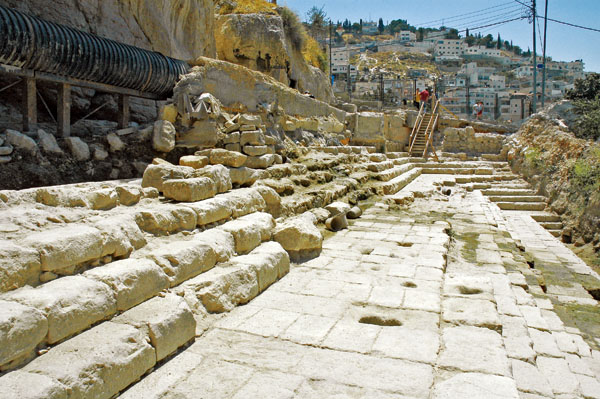 Photo: Todd Bolen / BiblePlaces.com | Pool of Siloam (1st century CE): |
| Summary: Summary: A pool mentioned in the New Testament (John 9:7) discovered in Jerusalem, confirming the accuracy of the biblical description and its association with a healing miracle by Jesus. | |
| Discovered: June 2004 | |
| Size: The structure Reich and Shukron discovered was 225 feet long, with corners that are slightly greater than 90 degrees, indicating a trapezoidal shape, with the widening end oriented toward Tyropoeon valley | |
| Current Location: Jerusalem | |
| Bible Reference: John 9:7. | |
| Further references: City of David – Episode 9 2024 Update |
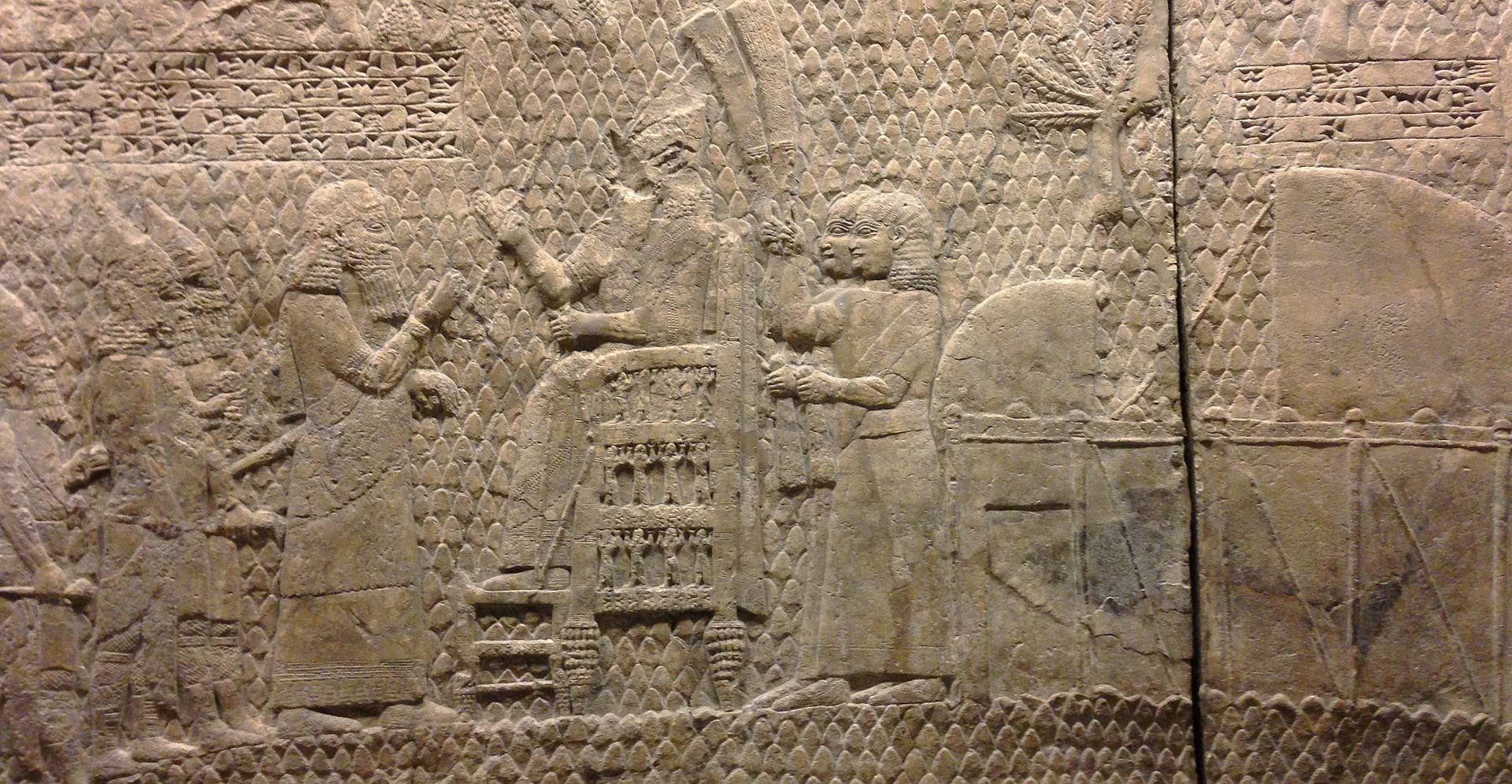 | The Lachish Reliefs (8th century BCE) |
| Summary: Depicts the forces of King Sennacherib of Assyria besieging the city of Lachish in 701 BCE, the second most important in the Kingdom of Judah during the reign of King Hezekiah. Soldiers can be seen storming the city’s defenses, while the captives are marched into exile. The reliefs adorned the walls of the throne room in the palace of King Sennacherib in Nineveh, the capital city of Assyria. The reliefs affirm the Biblical account of the fall of Lachish to the Assyrian Empire | |
| Discovered: discovered in 1845 in modern day Iraq | |
| Size: 12 metres wide and 5.10 metres high | |
| Current Location: British Museum | |
| Bible Reference: 2 Kings 19:25–26 & 2 Chronicles 32:9; Isa 36:1-2 | |
| Further references: |
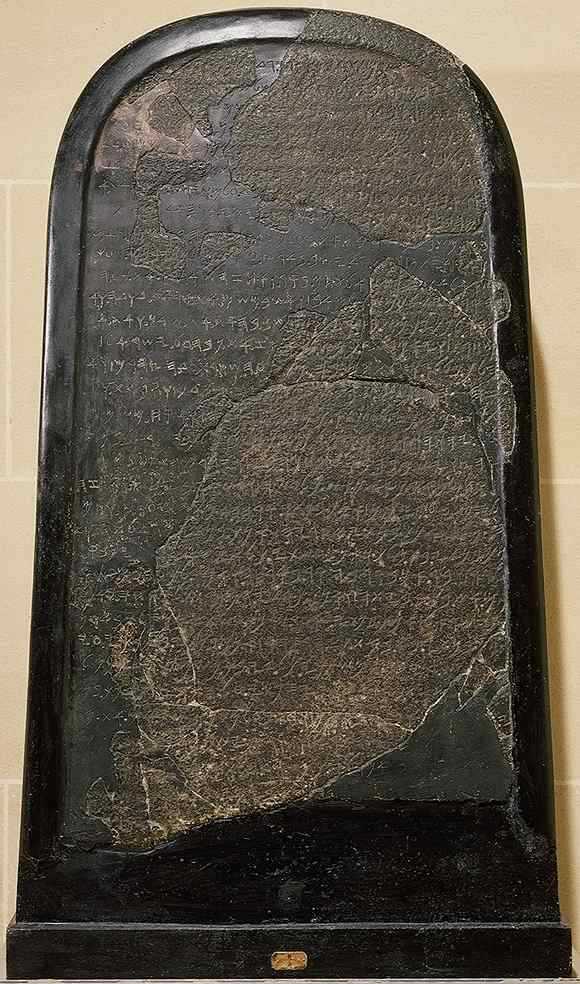 | Mesha Stele (Moabite Stone) (9th century BCE): |
| Summary: An inscribed stone monument found in present-day Jordan, detailing the victories and accomplishments of King Mesha of Moab, including conflicts with Israel, mentioned in the Bible. | |
| Discovered: discovered in 1868 by German missionary, F.A. Klein at Dhiban 20 miles east of the Dead Sea (across from En-gedi) | |
| Size: This 107 by 61cm black basalt monument | |
| Current Location: housed in The Louvre Museum, Paris | |
| Bible Reference: 2 Kings 3:4-27. | |
| Further references: Mesha Stele: The second ‘House of David’ Inscription |
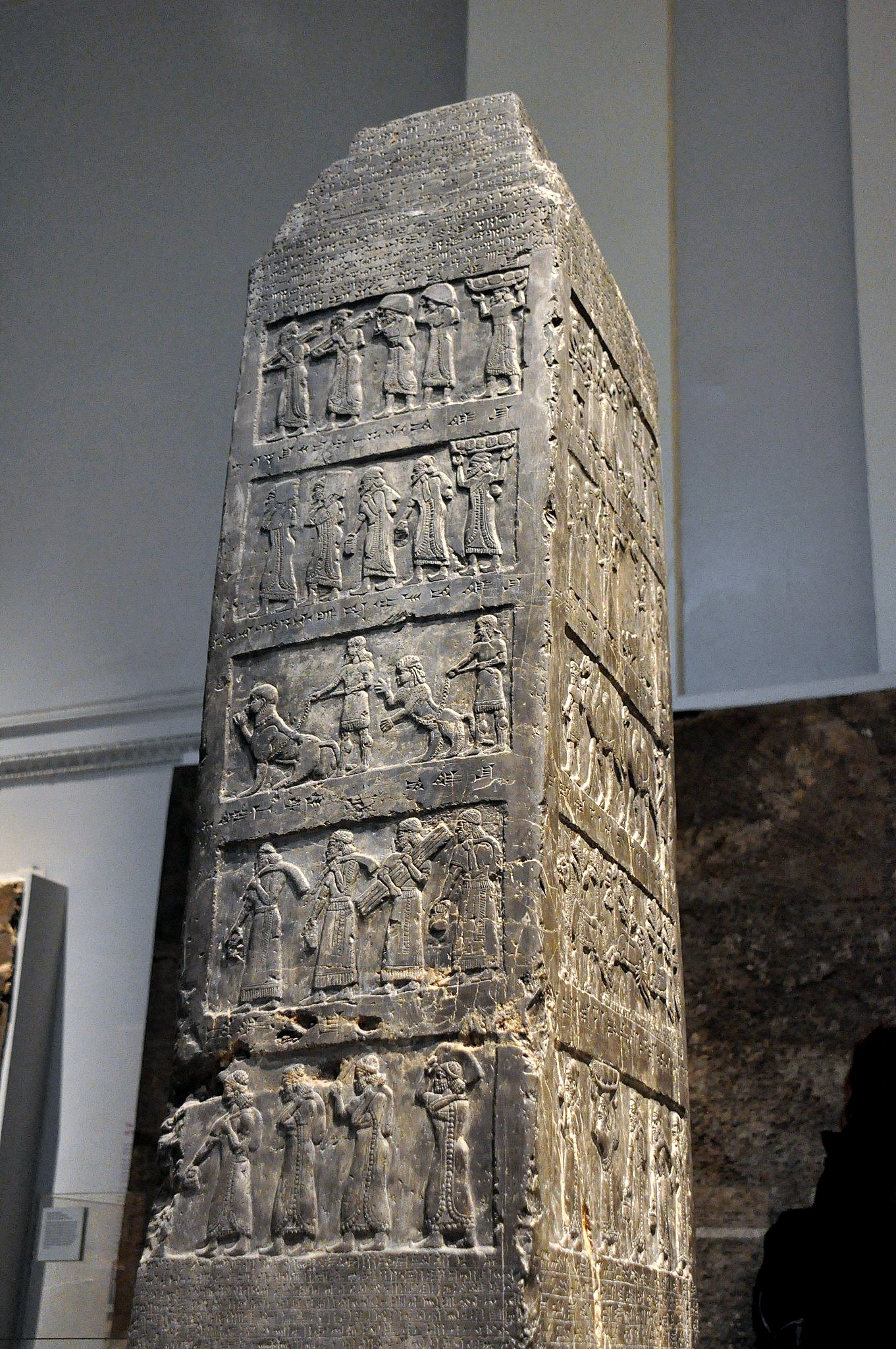 | The Black Obelisk of Shalmaneser III (858-824BC): |
| Summary: Inscription reads: “Tribute of Iaua [Jehu], son of Omri, Silver, Gold, a golden bowl, a golden beaker, golden goblets, pitchers of gold, tin, staves for the hand of the king, [and] javelins, I [Shalmaneser] received from him” (Biblical Archaeology Review, January-February 1995, p26) | |
| Discovered: In Assyrian city of Nimrud in 1846 | |
| Size: 6.5 foot tall black basalt obelisk (four-sided pillar) | |
| Current Location: British Museum in London | |
| Bible Reference: 2 Kings 9-10 | |
| Further references: |
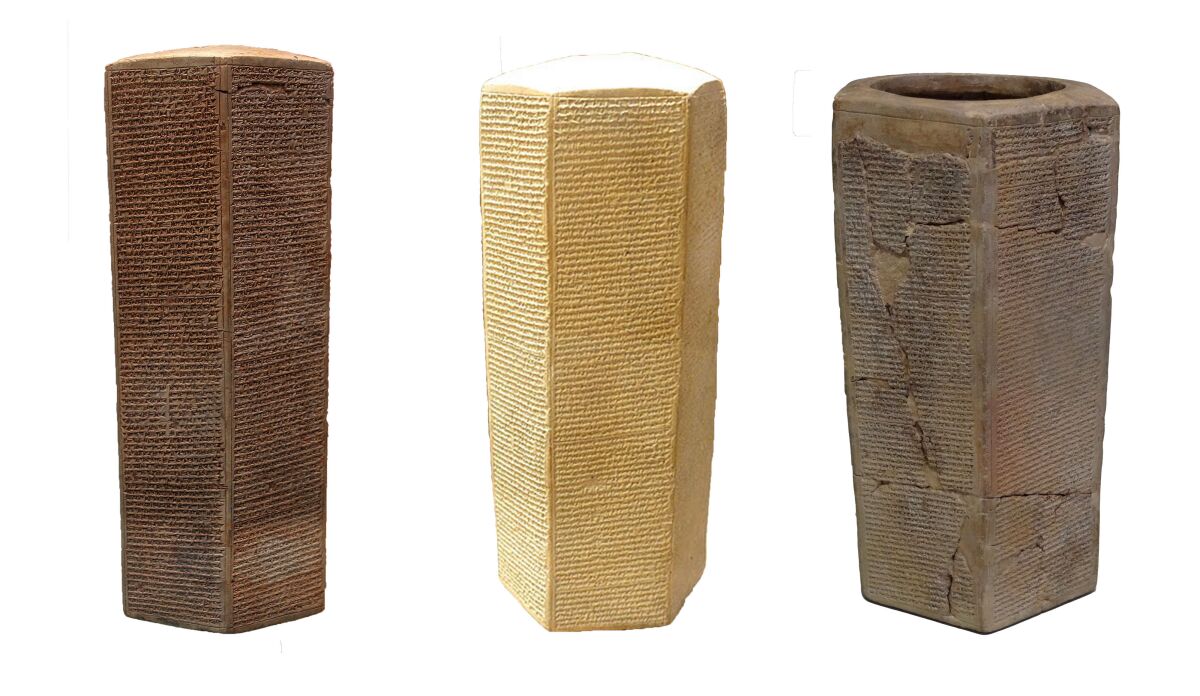 | Sennacherib’s Prism / Taylors Prism (7th century BCE) |
| Summary: This six-sided hexagonal clay prism, commonly known as the Taylor Prism, was discovered among the ruins of Nineveh (mound at Kuyunjik (in modern Mosul, Iraq)) by Colonel Taylor, the ancient capital of the Assyrian Empire. It contains the Annals of Sennacherib himself, the Assyrian king who had besieged Jerusalem in 701 BC during the reign of king Hezekiah. On the prism Sennacherib boasts that he shut up “Hezekiah the Judahite” within Jerusalem his own royal city “like a caged bird.” This prism is among the three accounts discovered so far which have been left by the Assyrian monarch of his campaign against Israel and Judah. | |
| Discovered: discovered in 1830 in modern day Iraq | |
| Size: 38.0 cm H, 14.0 cm W, 500 Lines of Writing (cuneiform) | |
| Current Location: Oriental Institute Chicago, Illinois | |
| Bible Reference: This event is recorded in several places in the Bible including Isaiah chapters 33 and 36; 2 Kings 18 – 19:37; 2 Chronicles 32:9, with the Biblical & archeological accounts confirming both the Assyrian siege of Jerusalem, and Sennacherib’s failure to conquer the city. | |
| Further references: |
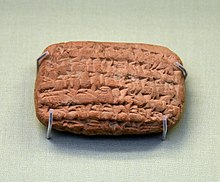 | Nebo-Sarsekim Tablet (595 BC) |
| Summary: The chief eunuch, Nabu-sharussu-ukin (Nebuchadnezzar II’s right-hand man), “rab sha-reshi”, donated gold to the god Marduk temple at Babylon. His name and title occur as Nebo-Sarsekim, “rab-saris” | |
| Discovered: 1875, Babylon, Deciphered in 2007 by Assyriologist Michael Jursa | |
| Size: 5.5 cm | |
| Current Location: The British Museum | |
| Bible Reference: Nabu-sharrussu-ukin transliterated into English becomes Nebo-Sarsekim and according to Jeremiah 39:3, this Nebo-Sarsekim was the Chief Eunuch who was serving Nebuchadnezzar during the fall of Jerusalem in 587 BC. The Nebo-Sarsekim Tablet not only confirms the biblical person mentioned by Jeremiah, it also affirms the title, Chief Eunuch, used in Daniel 1:3 | |
| Further references: Bible Archaeology Report – Top 10 Discoveries related to the Book of Daniel |
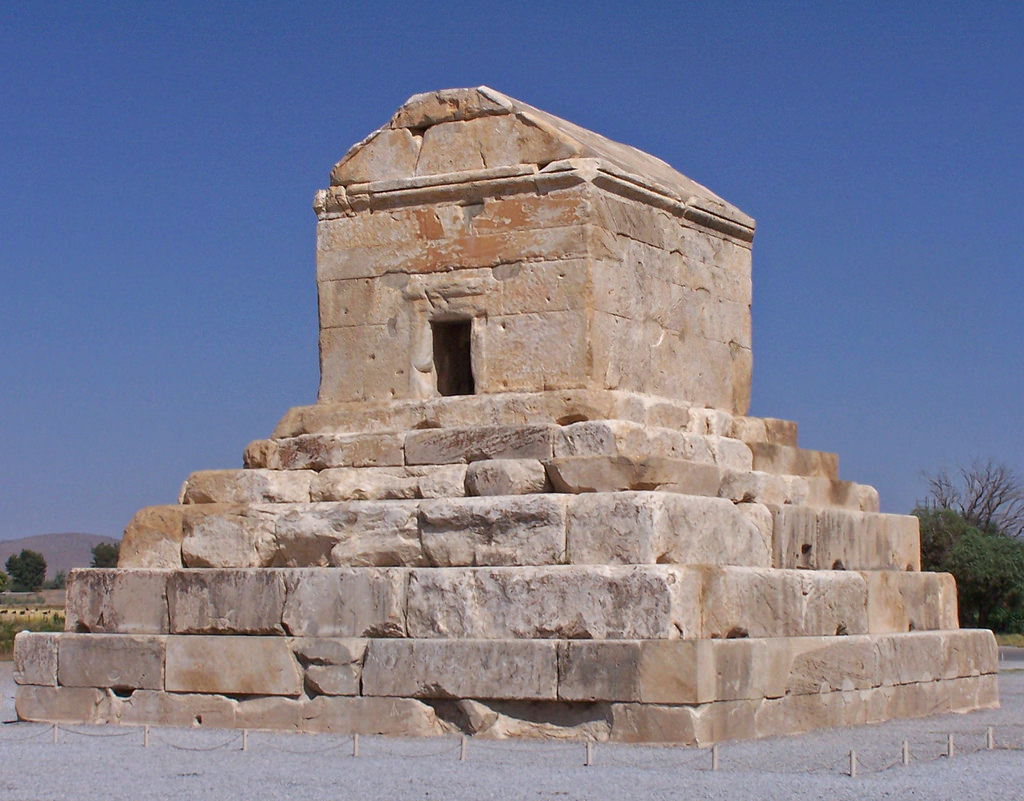 | The Tomb of Cyrus at Pasargadae (530BC) |
| Summary: The Tomb of Cyrus the Great | |
| Discovered: 1812 by James Justinian Morier | |
| Size: stands a total of 36 feet high, The tomb itself is 18 feet high resting on a 6 level base, also 18 feet high | |
| Current Location: Pasargad, Iran | |
| Bible Reference: 2 Chron 36:22-23 | |
| Further references: |
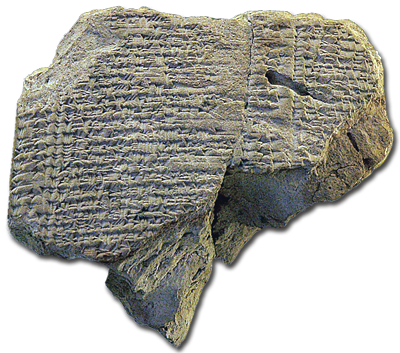 | Jehoiachin’s Rations Tablets (Neo-Babylonian period (ca. 595–570 B.C.E.)) |
| Summary: Jehoiachin’s rations tablets date from the 6th century BC and describe the oil rations set aside for a royal captive identified with Jeconiah, king of Judah. | |
| Discovered: 1899 – 1917 | |
| Size: 9.2 cm high, 10.5 wide | |
| Current Location: Museum of the Ancient Near East, Pergamon Museum, Berlin, Room 6 | |
| Bible Reference: 2 Kings 24 & 25. He is referred to by three different names in Scripture: Jeconiah (meaning, “Yahweh will be steadfast” – 1 Chron. 3:16), Jehoiachin (meaning “Yahweh will uphold” – 2 Kings 24:8), and Coniah (“Yahweh has upheld him” – Jer. 37:1). | |
| Further references: Review the Bible Archaeology Report for further evidence of Jehoiachin. |
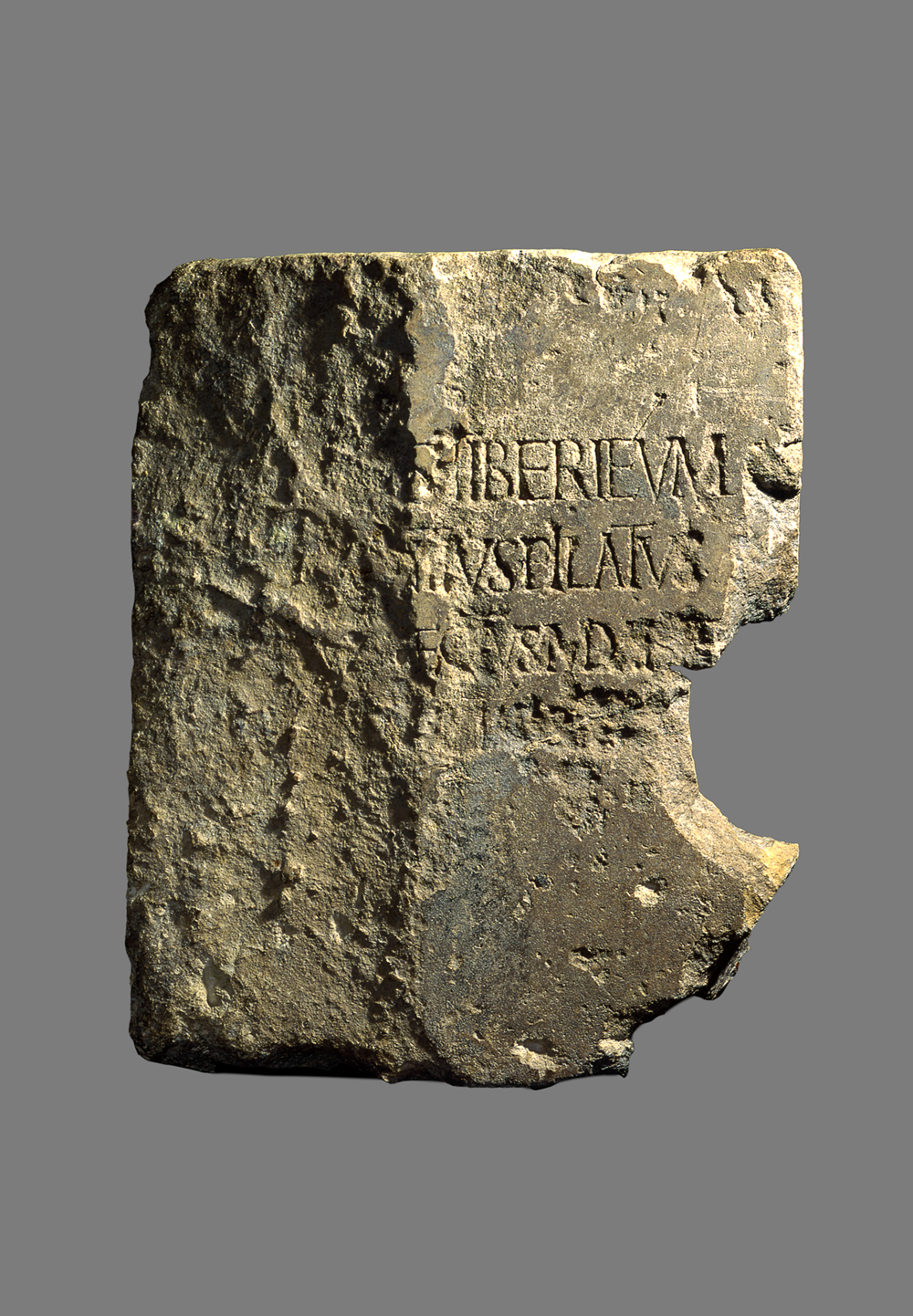 © Israel Museum | The Pontius Pilate Inscription |
| Summary: a stone slab bearing the name of Pontius Pilate, who was involved in the trial of Jesus. | |
| Discovered: In 1961 archaeologists working at the ruins of Caesarea Maritima, in Israel | |
| Size: 82.0 cm H, 65.0 cm W | |
| Current Location: Israel Museum (Jerusalem) | |
| Bible Reference: Luke 3:1 | |
| Further references: |
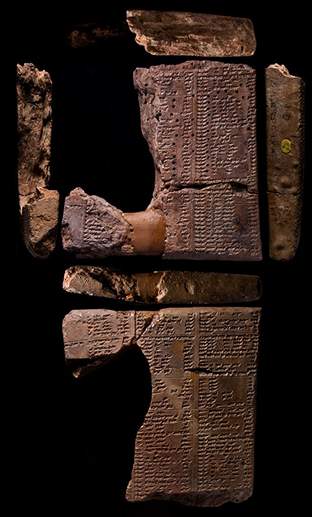 © British Museum, K. 51 | List of Assyrian Eponymes (609-447 BC) |
| Summary: Cuniform tablets found in the library of the Assyrian king, Ashurbanipal, in Nineveh, unlocked the dating system for the Old Testament. | |
| Discovered: 1853-1884 – Nineveh | |
| Size: 7.8cm high, 10.2cm wide | |
| Current Location: British Museum | |
| Bible Reference: This tablet allows us to link Biblical dating to our current Gregorian calendar, cp 2 Kings 6:1 | |
| Further references: Assyrian eclipse , Tablet – The British Museum, CDLI:wiki |
Nature
- The scientists religious feeling takes the form of a rapturous amazement at the harmony of nature, which reveals an intelligence of such superiority that, compared with it, all the systematic thinking and acting of human beings is an utterly insignificant reflection.
Albert Einstein (1940) ‘The world as I see it’. p9. - This most beautiful system of the sun, planets & comets, could only proceed from the council and dominion of an intelligent and powerful being. Isaac Newton
- Look at the universe, and it is mathematically perfect.
- If the universe was the product of chance occurrences, or accident of nature, it would be in a state of chaos, whereas there is mathematical order and precision.
- Isa 45:12 I have made the earth, and created man upon it: I, even my hands, have stretched out the heavens, and all their host have I commanded.
- :18 For thus saith the Lord that created the heavens; God himself that formed the earth and made it; he hath established it, he created it not in vain, he formed it to be inhabited: I am the Lord; and there is none else.
- Psa 19:1 The heavens declare the glory of God; and the firmament sheweth his handiwork.
- “So many essential conditions are necessary for life to exist on earth, that it is mathematically impossible that all of them could exist in a proper relationship by chance, on earth, at one time” Dr Morrison (President of the NY Academy of Science)
- Air – A balanced mixture of gases Oxygen 21% of the atmosphere – much more dangerously combustible, much less, and we’d be fighting for breath.
- Sun – Earth 5% closer intense heat, earth would be sterile 5% further, permanent deep freeze. The precise position of the planet in relation to the sun is vital factor for life.
- Moon – Is placed 384,000km away from the earth any closer we’d have constant tidal waves, any further away and the sea would be a stagnant pond
- Water – combination of 2 gases – essential to life. Haven’t detected in liquid form on any other planet.
- Got there by chance? – Drill from the gigantic to the microscopic, down to the Atom itself, which is a mini planetary system in itself of electrons in orbit around a nucleus.
- Each Cell has its own programme of production, of reproduction, of communication, of nutrition, of repair and of waste removal.
- EYE – The eye is made of of many different types of cells, each carefully placed to complete the organ of sight. If the transparent cells of the lens were to be placed in the retina there would be no sight. If the optic nerve was misplaced there would be no sight. Thus it must be obvious that the eye has been carefully and purposefully designed and constructed.
- Science has revealed something of the complexity of the eye. The lens gathers light and projects an image onto the retina, which consists of many millions of delicate photo-receptors called rods and cones. From these many thousands of nerve fibres convey the picture to the brain. Then the brain interprets what has been seen, and reacts accordingly. That is a much too simplified version of the miracle of sight, but it illustrates the great complexity of the visual system, many details of which are not yet understood by science.
- It is no wonder that Sir Isaac Newton, the world-famous pioneer scientist, wrote: “Was the eye contrived without skill in optics, and the ear without knowledge of sound?’ Isaac Newton (Opticks 1704)
- Even Charles Darwin had to admit: “That the eye, with all its inimitable contrivances, could have been formed by natural selection, seems, I freely confess, absurd in the highest degree” (C. Darwin 1859, Origin of Species)
- EAR – The ears are more than hearing. The sense of balance, consciousness of gravity, and the movements of the body are all detected by this apparatus. Surely it is obvious that so compact and beautifully designed a system could not have evolved a bit at a time until it was complete. The individual separate parts would all have been useless until assembled in the right way.
- Pro 20:12 The hearing ear, and the seeing eye, the LORD hath made even both of them.